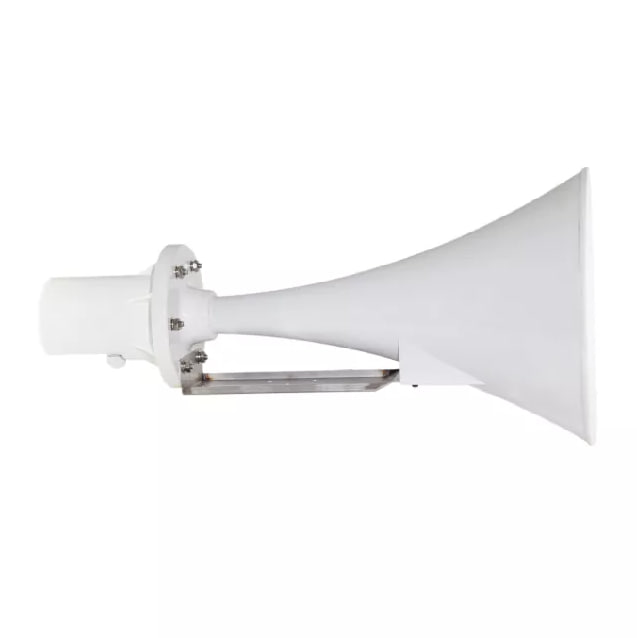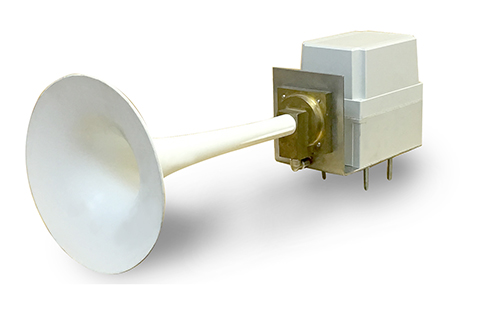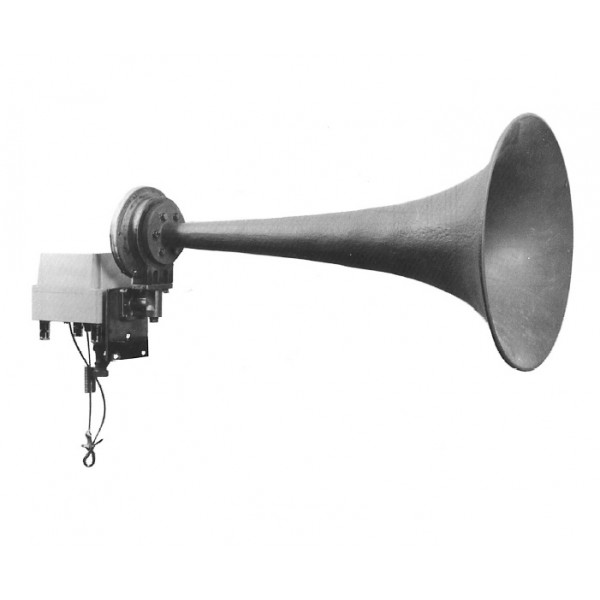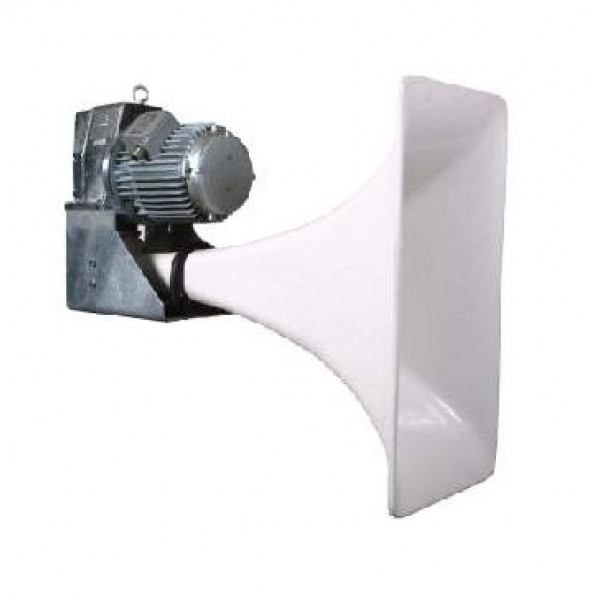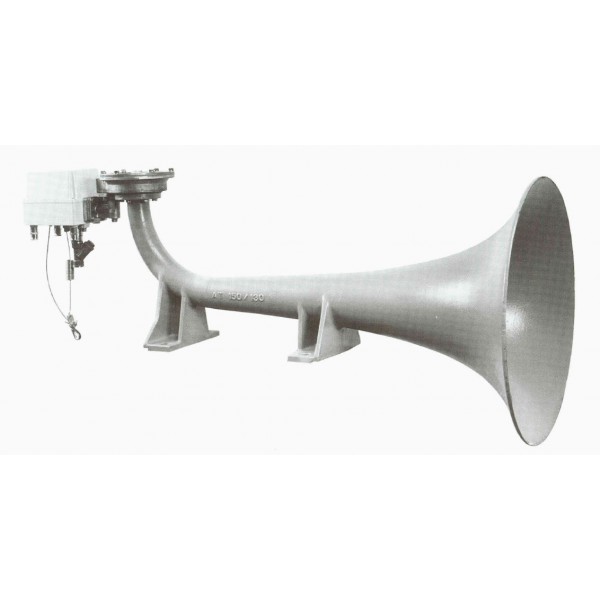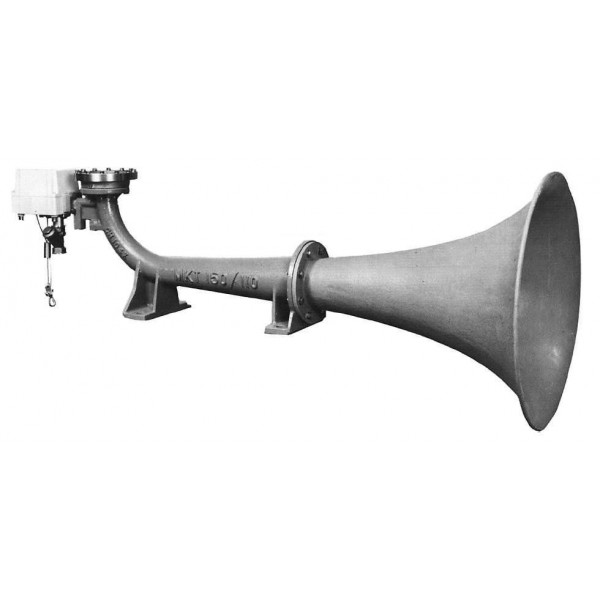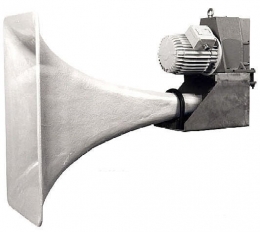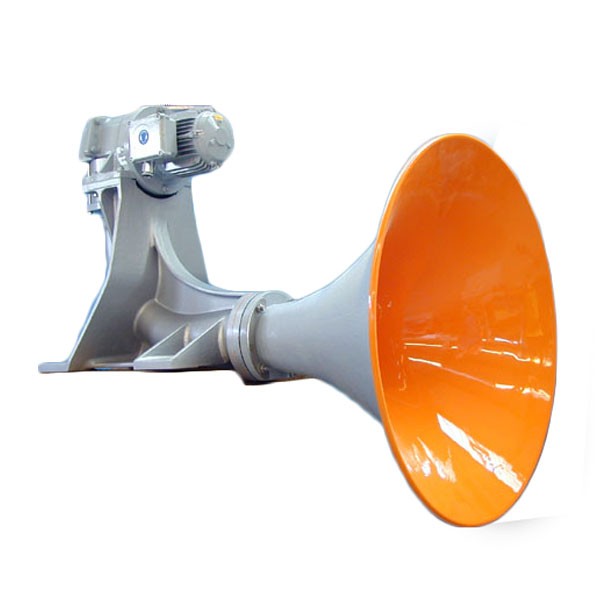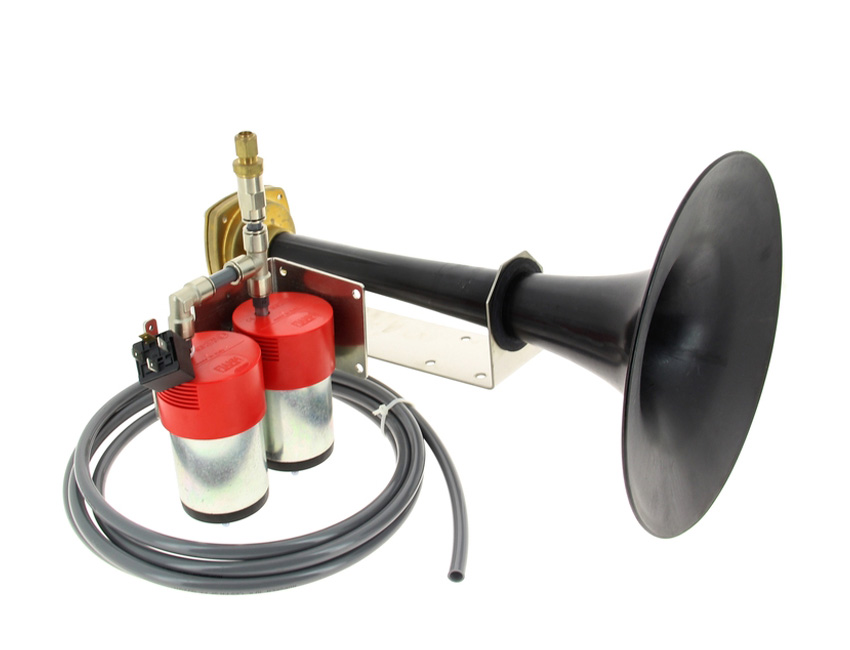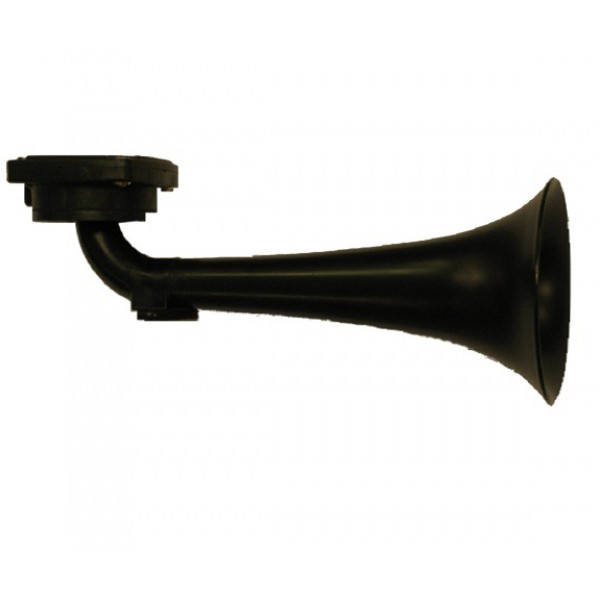AT 150/330
-
Available for order
-
Certificate:РМРС
AT 150/330
To order
Call our sales manager
Documentation
Брошюра 'AT 150/330'
Брошюра 'TV 784'
Брошюра 'TV 784'
AT 150/330 - a highly powerful siren, in full compliance with IMO requirements for vessels between 75 and 200 meters long. In accordance with IMO requirements are very low sounds to large vessels are not acceptable, as opposed to the medium and small vessels for which the frequency selection within a fairly wide. Preference is given to the signals that may hear, being at a distance.
SUPERTYFON AT 150/330 is supplied with the valve box 784 Valve Unit TV air supply. Note that Typhon held by four screws M16 to the jib-boom or a similar design. To avoid problems in his work, it is necessary to purge the feed pipe properly, and only then be connected to the siren. If the length of the pipe on the deck of over 100 meters, it is necessary to install a filter TP 15/2 at the base of the mast to protect the signal unit from condensate water and dust. It recommended about once a month to drain the filter.
The valve unit 784 is equipped with a TV section with the air flow, thermostatic heating, interchangeable chokes and filters. The device features two coils for normal and emergency operation and lanyard.
AT 150/330 for abuse COLREG-72, which states that all vessels of 12 meters or more should be equipped with a sound-signaling device (ship Typhon). However, the correct location of Typhon is very important, because nothing should interfere with the propagation of sound waves. Even a large deck surface may undesirably affect the propagation of sound like a well-known phenomenon of refraction of light waves. IMO advises to pay special attention to placing the siren on board and not only for the reasons mentioned above, but also to provide the required safety and permissible sound level at the observation post of the ship.
Specifications:
- Drive - Pneumatic
- The fundamental frequency - 330 Hz
- The required frequency - 130 - 350 Hz
- The minimum required level of IMO 1/3 octave at a distance of 1 meter - 138 dB
- Air flow rate - 20-30 l / s
- Heating power - 24 watts
- Power Valve - 27 Watt
- Weight - 11.5 kg
Analogues
 +7 (812) 4-673-673
+7 (812) 4-673-673
